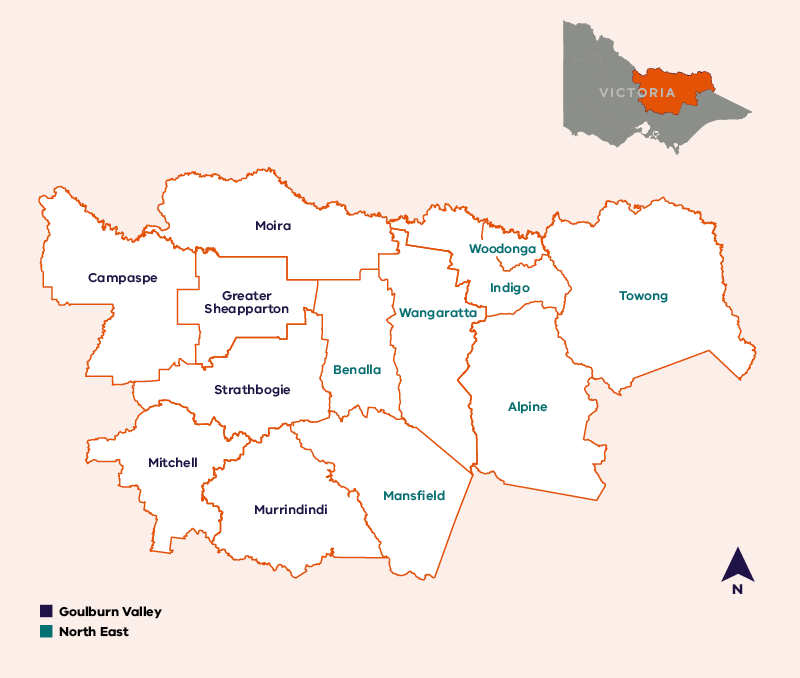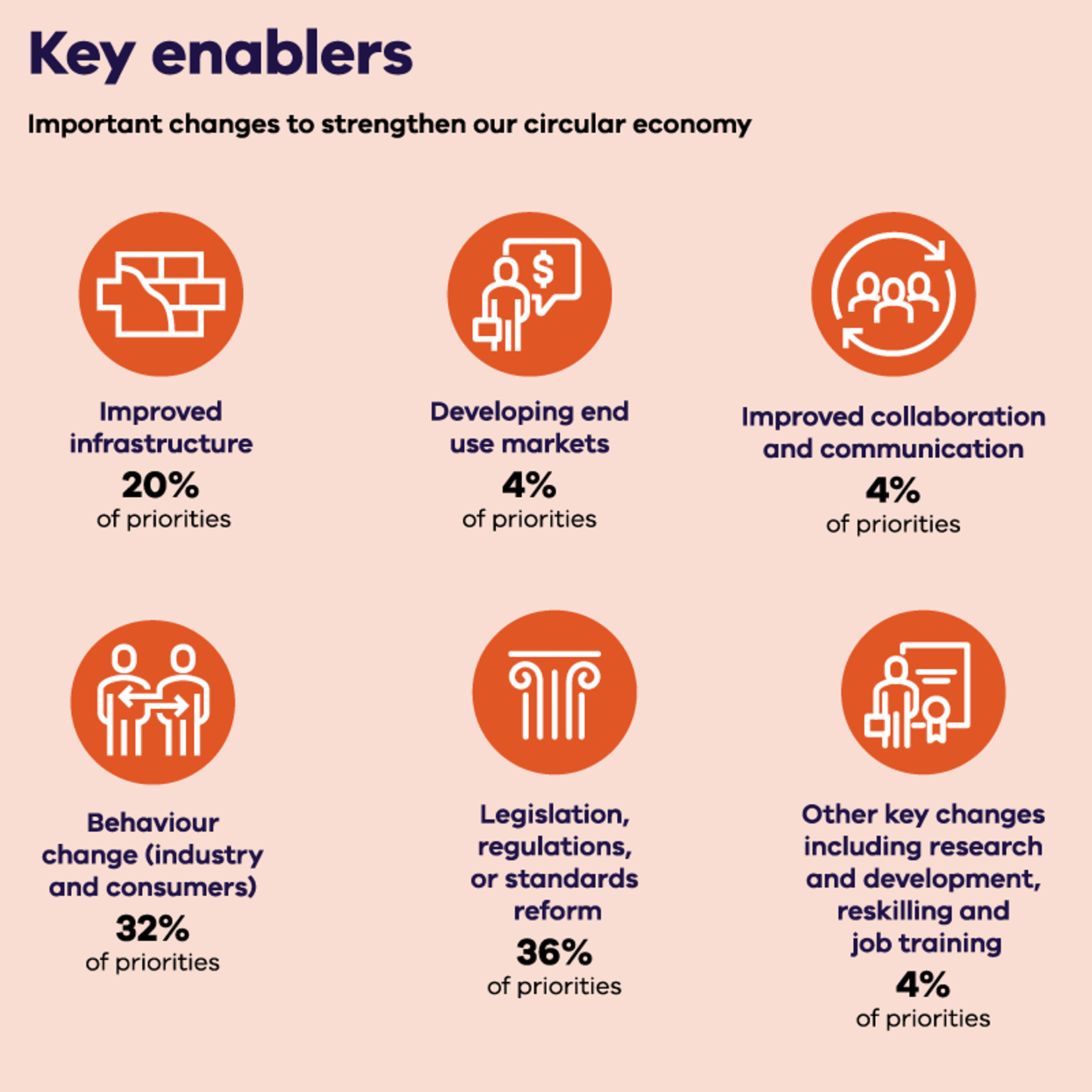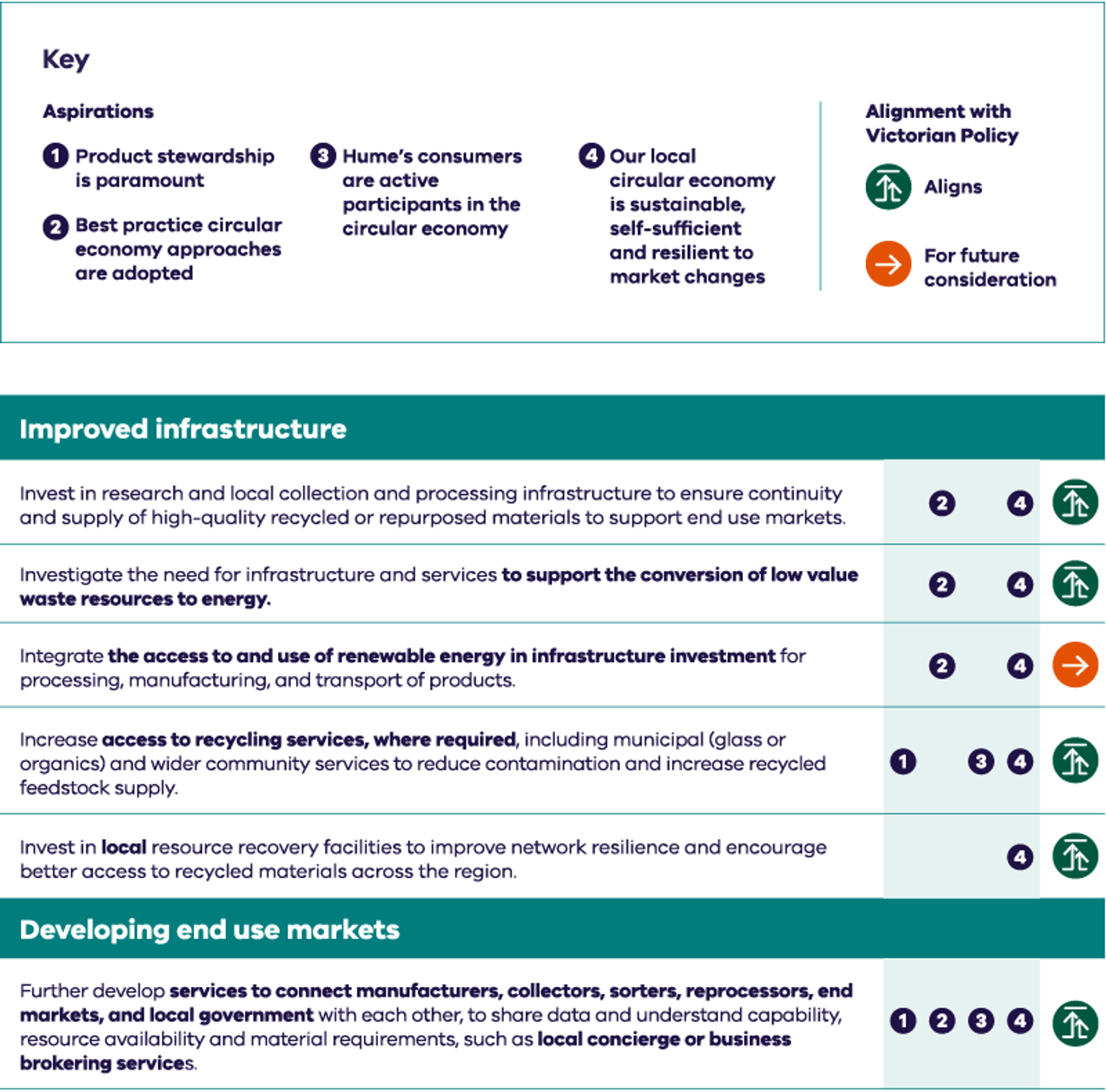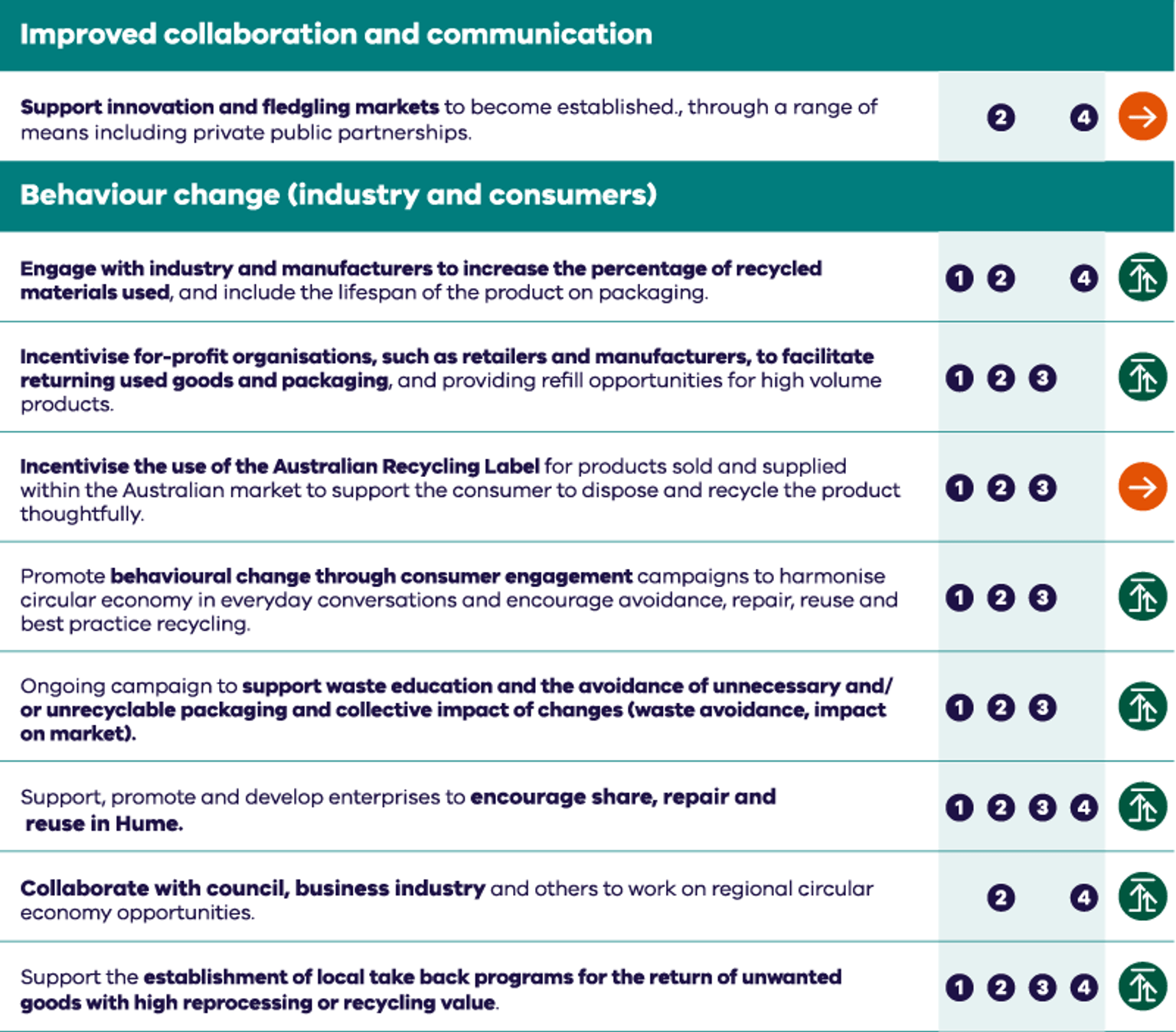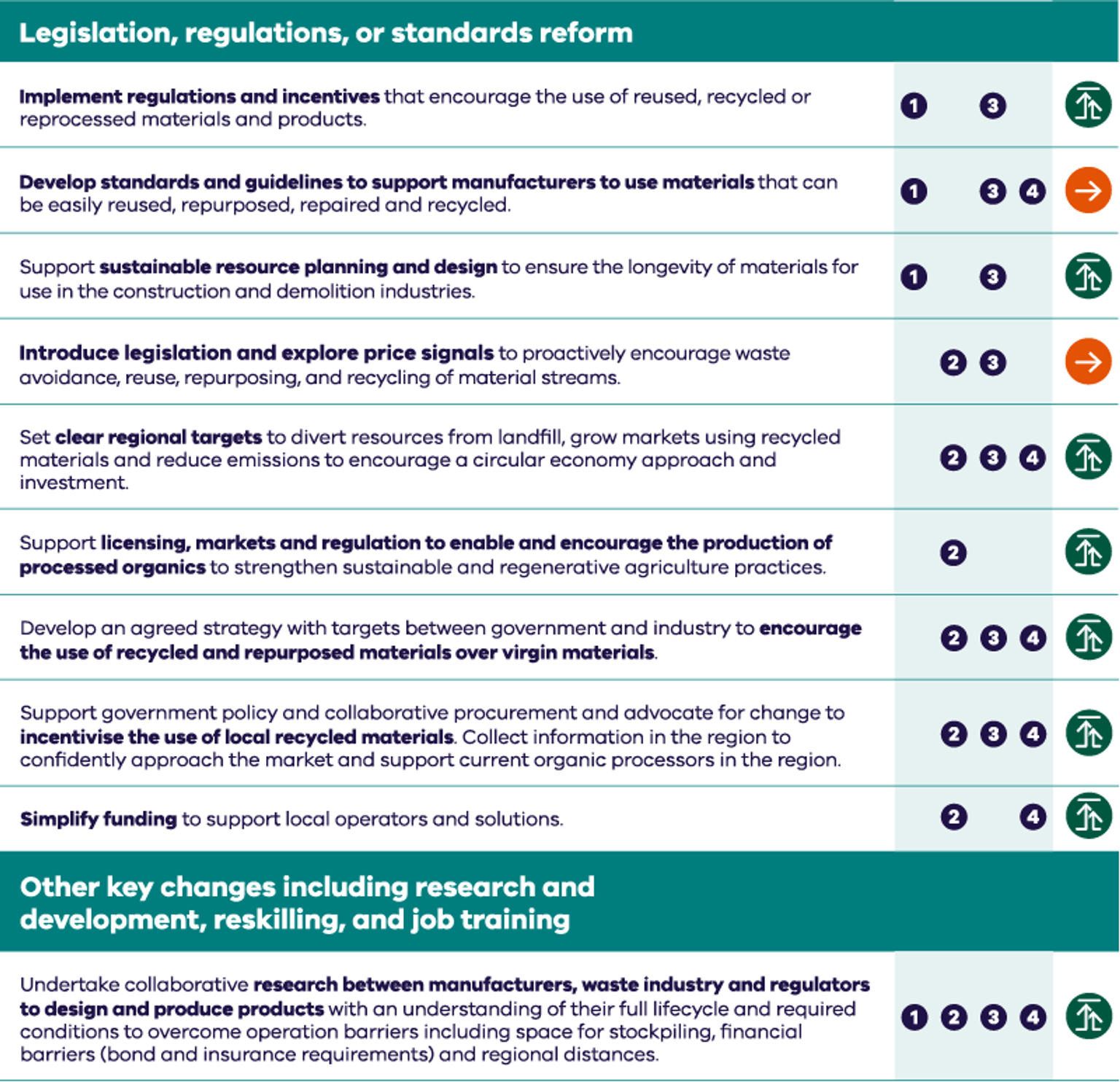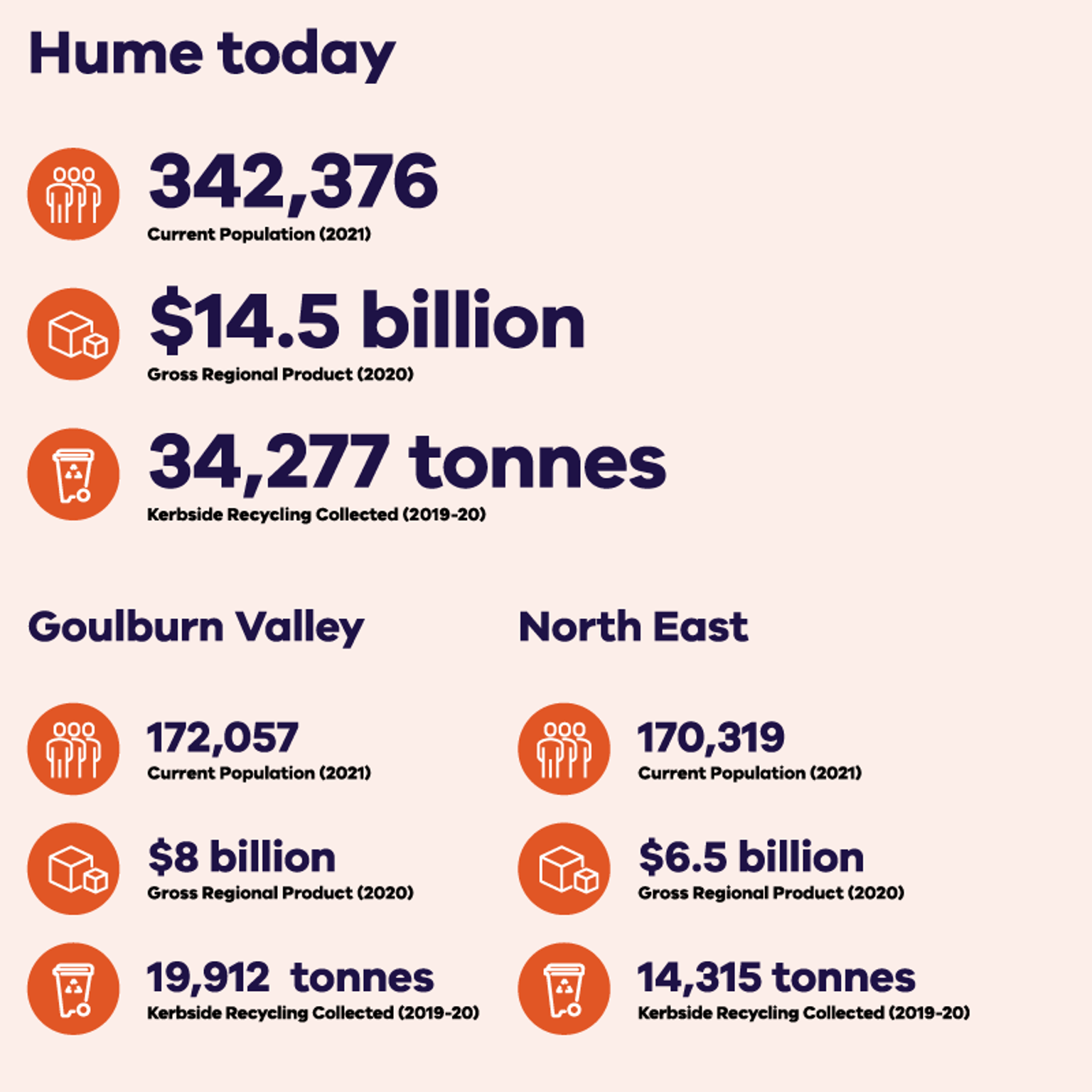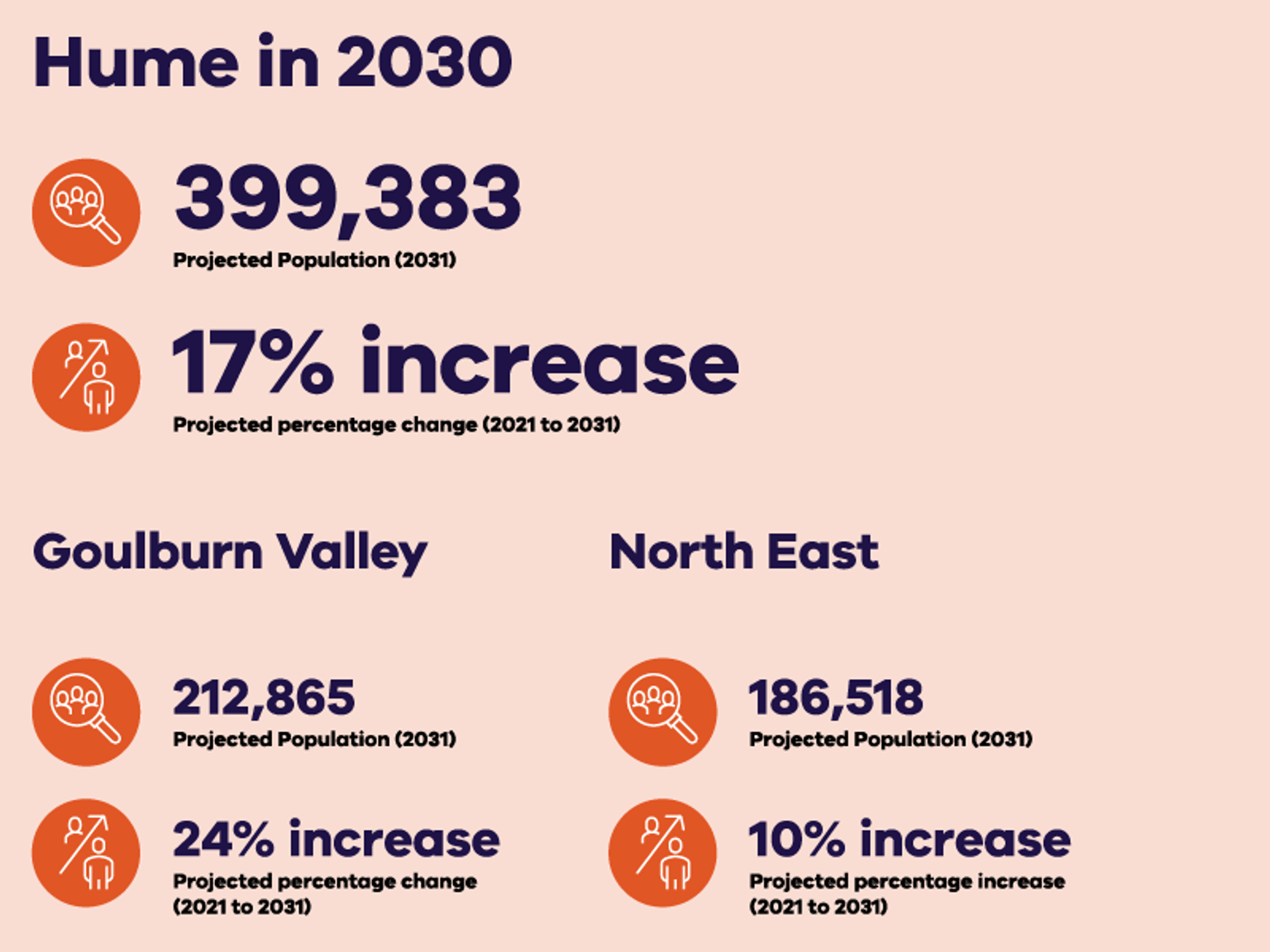The Hume regional circular economy plan sets out the region's aspirations for a sustainable and thriving circular economy.
Representatives from 59 organisations contributed to the Hume Regional circular economy plan, including:
- local government
- businesses and business associations
- manufacturers
- social enterprise
- the waste and resource recovery industry
- research and education institutions
- and the Victorian Government.
They participated in robust discussions and workshops facilitated by the Victorian Government designed to encourage strategic thinking about their region, where they are now, where they want to be by 2030, and how they can work together to get there.
Aspirations to 2030
Hume’s four circular economy aspirations to 2030 are detailed below, along with six important changes, or ‘key enablers’, that have been identified to help realise these aspirations.
By 2030, in Hume
1. Product stewardship is paramount
All those involved in the product life cycle—manufacturers, retailers, users, and disposers share responsibility for reducing the environmental impacts of products.
2. Best practice circular economy approaches are adopted
All levels of government, industry, education institutions, researchers and community work together to progress the circular economy in Hume.
3. Hume's consumers are active participants in the circular economy
All sectors of the community make decisions to avoid waste generation, encourage reuse and recycling of products to reduce their environmental impact.
4. Our local circular economy is sustainable, self-sufficient and resilient to market changes
We collaborate to create and take up local circular economy opportunities.
Key enablers
Priorities to achieve our aspirations
Hume has developed 25 priorities to achieve their circular economy aspirations to 2030. Each priority has been identified as contributing to one or more aspiration and has been grouped by Key Enablers. Many of the priorities align with current Victorian Government policy, whilst others will be for future consideration.
Hume today
Hume representatives developed the region's circular economy aspirations and priorities. The representatives brought a local understanding of the region’s strengths and challenges. They considered ‘where we are today’ as a region, before projecting forward to ‘where we want to be’ in 2030 and beyond.
The process identified the region's key strengths. These strengths will help the region work towards their 2030 aspirations.
The Hume region includes the sub-regions of Goulburn Valley and North East.
The region has a good network of existing infrastructure. This includes material recovery facilities (MRFs) and resource recovery centres.
It is close to Melbourne and has strong transport links. Two important transport routes run through the region. The Hume and Goulburn Valley transport corridors connect the region to other areas of Victoria and other states. This supports the movement of materials to processing facilities and end markets.
There is a concentration of major food manufacturers in the region. It is possible this will increase organic supplies and the potential to increase the use of recycled materials.
The region also benefits from the availability of land for storing and processing recyclables.
Refer to Victoria's Regional Economic Development Strategies (REDS) for in-depth economic analysis.
Strengths
- Existing accessible network of materials recovery facilities (MRFs) and resource recovery centres (RRC).
- Identified large capacity for organics processing and plastics reprocessing.
- Strong multi-modal transport links, proximity to Melbourne and access to the region’s collection, sorting, processing and manufacturing precincts.
- Economic growth with a concentration of major food manufacturers –this helps with the supply of feed (organics) and use of recycled materials (glass).
- Business growth from collaborative investment models: public private partnership, joint venture, small social enterprise.
- Benefit from the availability of land appropriately zoned for storing and processing recyclables.
- High uptake and participation rates of food and organics waste collection service.
Hume in 2030
Hume representatives also considered the region’s challenges. They developed the region’s circular economy priorities to mitigate these challenges.
The region faces challenges with low economies of scale for some recycled material streams. Infrastructure can be hard to access. There are large distances between processing and manufacturing facilities. It can also be expensive to access small processing facilities.
By 2030, the Hume region is forecast to be home to 399,383 people, increasing by 17% from 2021 to 2031.
Higher rates of waste and recyclable materials are likely where populations increase. This will increase demand for sorting, processing, and storage infrastructure. Increased material transport out of the region will place added pressure on regional roads.
Some areas that are not forecast to increase their populations may continue not to need household collection. This could present a challenge for local councils and industry aiming to divert materials from landfill.
Refer to Victoria's Regional Economic Development Strategies (REDS) for in-depth economic analysis.
Challenges
- Large distances between waste sources and processing facilities equate to low economies of scale for some waste streams, high transport costs and high relative costs of small processing facilities reduces cost effectiveness of recycling.
- Lack of local end markets and incentives, which discourages investment in resource recovery facilities or end-product manufacturing.
- Recycling industry dominated by large enterprises, which makes it harder for small MRFs to compete.
- Lack of legislative and financial incentives to encourage use of recycled material.
- Lack of financial incentives to innovate and red tape involved in sorting and processing.
- Fast growing population in the peri-urban areas of the region, such as Mitchell Shire, requiring infrastructure and services to meet growing demand.
- Significant organic materials being managed in Hume (Goulburn Valley) from other regions, including related biosecurity risks.
Hume regional circular economy plan
Engagement program summary report
For more information on the Engagement Program refer to the Regional circular economy plans engagement summary report.
Updated

